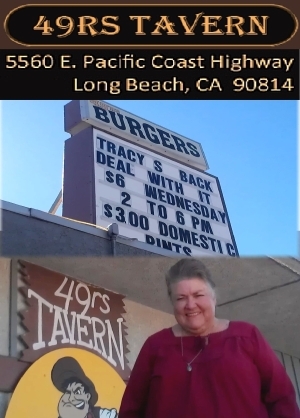|
CA's Coastal Commission: Forty Years of Coastal Protection by Mel Nutter, Esq.
|

 |
|
CA's Coastal Commission: Forty Years of Coastal Protection by Mel Nutter, Esq.
|

 |
| Editor's note: 2012 marked the 40th anniversary of a law that CA's legislature refused to enact. Sacramento's refusal prompted principled, prescient volunteers to gather petition signatures that initiated a ballot measure by which CA voters created the CA Coastal Commission. In that historic action, the people of CA established their right to regulate development, ensure public access and protect CA's coastline for future generations.
Mr. Nutter emailed us this piece weeks ago, which we should have run earlier but managed to derail due to our own disorganization. At year end, Mr. Nutter's insights remain timely, particularly entering the new year and the Coastal Commission's fifth decade. Photo right shows Mr. Nutter in 2009, addressing wetlands supporters after a landowner cleared land south of Loynes/west of Studebaker without required permits (leading to a Coastal Commission enforced remedy). In 2011, Mr. Nutter cited the Coastal Act in opposing aspects of a development then-proposed at 2nd/PCH (which a City Council majority ultimately didn't approve). November 2012 marked the 40th anniversary of the passage of Proposition 20, the California initiative that created the California Coastal Commission. In the late 1960s California experienced a population explosion that led to extreme development pressures. As a result, changes to the landscape of California’s 1,100-mile long coastline accelerated. Some of those changes threatened to destroy the values that made the coast California’s crown jewel. Coastal wetlands were being filled in or being dredged to make way for new marinas. In Malibu, miles of beach houses standing side by side eliminated both views and access to its magnificent beaches. In Sonoma County, the developers of Sea Ranch had eliminated access to 10 miles of spectacular coastline. In Long Beach, the City Council required that all new buildings along the City’s most scenic coastal roadway be high-rise structures. Then, in January 1969, a massive oil blowout from a Union Oil drilling platform off the Santa Barbara coast shocked the nation. Californians were horrified to see pictures of thick black crude oil covering Santa Barbara’s beaches and killing birds and sea mammals. The event triggered a huge public reaction. The response was swift. Like-minded people joined with Sonoma County’s Bill Kortum of COAAST (Californians Organized to Acquire Access to State Tidelands) to create a statewide network of coastal protection activists. In 1971 and 1972, Assemblymen Alan Sieroty (D-Los Angeles County) and John Dunlap (D-Solano & Napa Counties), inspired by a suggestion from Ellen Stern Harris of Beverly Hills, introduced legislation to protect the entire California coast. Each year their legislation passed through the State Assembly, but died in a Senate Committee. By 1972, coastal activists had created a coalition known as The Coastal Alliance. Recognizing that legislative efforts were going nowhere, with assistance from Peter Douglas of Assemblyman Sieroty’s staff, the members of the Alliance wrote a ballot initiative measure known as Proposition 20 (The California Coastal Zone Conservation Act of 1972). Led by Janet Adams, the Alliance’s unpaid signature gatherers obtained 416,000 valid signatures within a month. Proposition 20 appeared on the November 7, 1972, ballot. Although a determined set of opponents heavily outspend the supporters of the initiative, the voters approved Proposition 20 by a 10 percent margin. The Coastal Initiative required the Coastal Commission to create and submit to the state legislature by 1975, a proposal for the long-term protection and management of the coast. It delivered a comprehensive plan on time. In response, the legislature passed and Governor Jerry Brown signed the Coastal Act of 1976, making the Coastal Commission a permanent state agency. Forty years after its creation, the Commission continues to have a profound influence on our coast. In addition, the Coastal Act itself has been a model for coastal management programs around the world. Over the past 40 years, the Coastal Commission has accomplished much. It has preserved beach access and protected ocean views. Now the public can visit the Sea Ranch beachfront. With the support from Sacramento, the Commission stopped further offshore oil drilling along California’s coast. It prevented developers from building 700 homes in the Bolsa Chica lowlands, one of the Southern California’s most important wetlands. Commission critics have mischaracterized it as an out of control agency that acts without regard to the rights of property owners, but the fact is that the Commission has approved 97 percent of the permit applications it has considered, often with changes that have improved project proposals. 2012 not only marks the Coastal Commission’s 40th year, but also the loss of some of the Coast’s true heroes. After helping write both the Coastal Initiative and the Coastal Act of 1976, and then serving as the Commission’s executive director for 26 years, Peter Douglas, died this April. Naomi Schwartz, a former Commission Chair and longtime member of the Santa Barbara Board of Supervisors, died in June. Other coastal champions including, Mel Lane, the first Commission Chair, and Ellen Stern Harris, its first Vice Chair, are also gone, but their contribution to coastal protection is incalculable. Those who have gone before have left an enormous legacy. Now is the time for a new generation of coastal advocates to use that legacy wisely. Peter Douglas often said, "The coast is never saved. It’s always being saved." We, who care about the coast, have an obligation to those who have gone before and to those yet unborn to continue the work of saving California's Coast.
Contact us: mail@LBReport.com |
           Hardwood Floor Specialists Call (562) 422-2800 or (714) 836-7050  |
Contact us: mail@LBReport.com